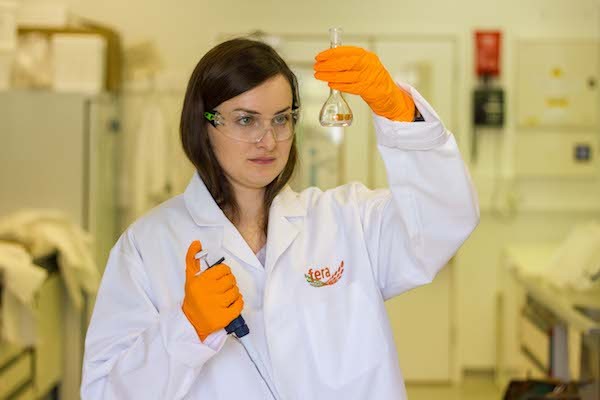Members Login

Channels
Special Offers & Promotions
Higher Tier Testing would Answer Neonicotinoid Pesticide Question
From September 1, 2018, the use of five neonicotinoid pesticides are banned in France, making the nation stricter than the European Union, which has only banned three of the five popular pesticides.
The move comes after various studies demonstrated the potential harmful impact of the nicotine-based chemicals on bees and aquatic invertebrates.
Dr Rachael Benstead, senior aquatic ecotoxicologist at translational science and research organisation Fera Science Ltd explains how testing in a realistic environment could change the way we understand the environmental impact of such chemicals in the future.
As well as the total ban in France, Canada has given farmers three years to find alternatives to two of the three nicotine-based pesticides currently approved for use across the nation. Health Canada’s Pest Management Regulation Agency (PMRA) wants to phase out the outdoor use of thiamethoxam and clothianidin.
The PMRA began studying the pesticides in 2012 in response to concerns about the impact on honey bees. However, it was the results of a subsequent study in 2016 that highlighted the impact on aquatic invertebrates and led to the decision to ban the products.
Similar, limited studies in laboratory and confined mesocosm testing facilities by the U.S. Environmental Protection Agency (EPA) found that aquatic insects are highly sensitive to neonicotinoids and the impact on aquatic invertebrates can have cascading effects on food webs and healthy ecosystem function. This includes low level, sublethal exposures resulting in decreases in species abundance and altered predator-prey relationships.
The EPA also states that current federal aquatic life benchmarks for neonicotinoids are potentially underestimating risks and chemical mixtures and their potential synergistic effects are not considered in aquatic risk assessments, resulting in unknown risks to species.
This not only raises questions about the process of bringing plant protection products (PPPs) to market, but also around the studies that have concluded what level of risk neonicotinoids pose a risk to aquatic ecosystems.
Higher tier testing in an environment that more closely replicates edge-of-field waterbodies, like Fera’s E-Flows mesocosm, holds the potential to change that in the future. Advanced testing facilities, such as the E-Flows mesocosm, which can provide new scientific data, will help us to understand environmental impacts and the risks of these pesticides to aquatic organisms in a way never possible before. This will allow better understanding based on facts underpinned by new scientific data to prevent potential harm to aquatic ecosystems.
The pesticides in question here are extremely popular, meaning the proposed bans have left farmers concerned about sourcing alternatives — as well as raising questions about whether existing alternatives are any better for the environment. For example, many must be applied in much higher doses in order to be effective.
The ambiguity around the impact of all pesticides and the recent view of organisations like the EPA that potential risks are being underestimated, makes it clear that there is a need at product testing phases to generate broader datasets about environmental interactions.
As the E-Flows mesocosm has the capability to test the effect of chemicals in 60 free flowing streams supplied with fresh water and stocked with a variety of plants and invertebrates, the data produced is a more accurate view of how crop protection chemicals will interact with nearby aquatic ecosystems. This provides a tool that has never been available before, to generate exposure scenarios and effects data that pushes the science beyond current capabilities of existing technology.
Of course, this also provides an interesting commercial opportunity for manufacturers of crop protection chemicals. By providing the market with new products supported by data of this high quality, pesticide and biocide manufacturers will be in a position to fill the gap left by the removal of neonicotinoids from agriculture.
Media Partners



